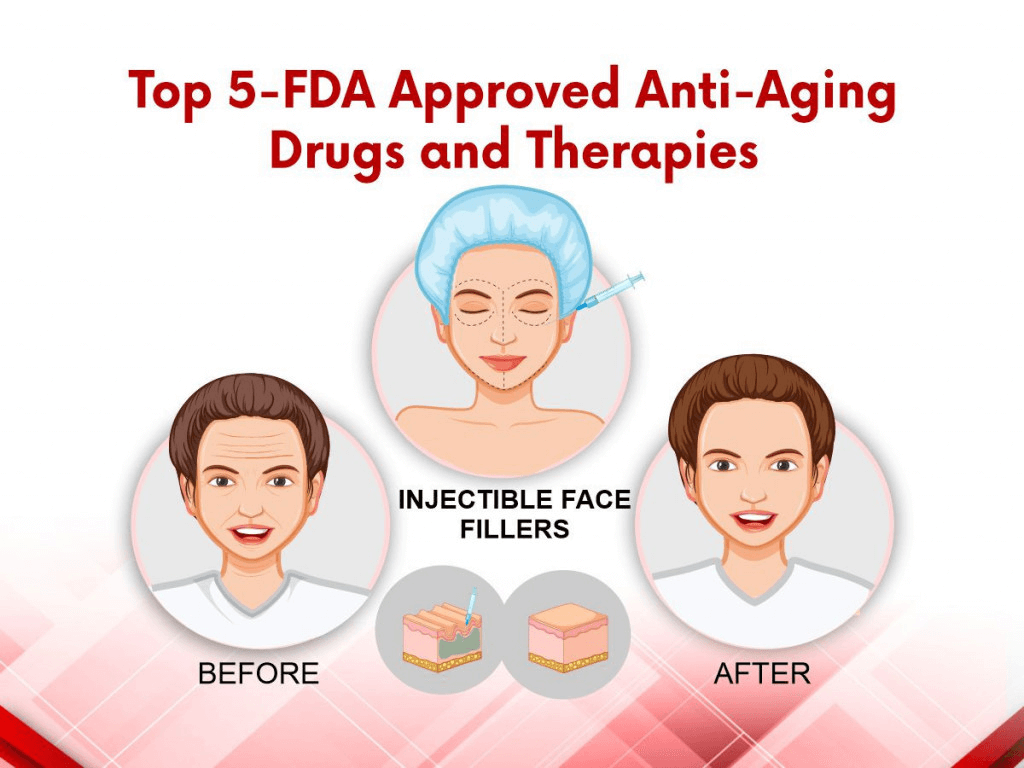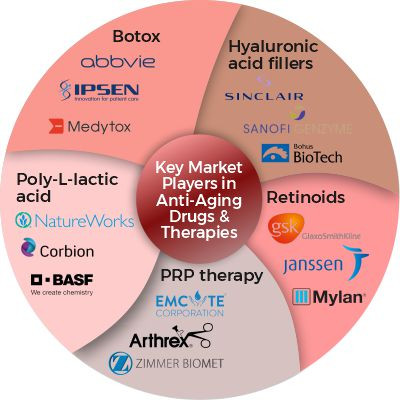
Close


The inevitable ageing process affects all humans. Aging can bring a wealth of knowledge and experience, but it can also present its fair share of physical and mental challenges.
Recent research, however, indicates that pharmaceutical methods used to enhance and possibly slow down the aging process could provide new insights into this topic. That’s why there has been a growing interest in anti-aging drugs that can help us slow down or even reverse the effects of aging.
Anti-aging medicine is a developing field in medicine that focuses on treating the root causes of aging and addressing age-related health concerns. The ultimate objective is to prolong the healthy period of human life, maintaining youthful features and vitality for as long as possible.
These drugs work by counteracting the effects of cellular damage and degradation that occur as we age.
The market for anti-aging drugs is expected to grow at a compound annual growth rate (CAGR) of 7.10%, and reach a size of USD 90.20 billion by 2030.
As we age, our skin loses its elasticity, and wrinkles, fine lines, and other signs of aging become more visible. While there are many anti-aging products available on the market, not all of them are FDA-approved or backed by clinical trials.
In this blog, we’ll discuss 5 Top FDA-approved anti-aging drugs that are proven to be effective in reducing the signs of aging.

Botox, or botulinum toxin, is a popular anti-aging drug that is injected into the skin to reduce wrinkles and fine lines. It works by temporarily paralyzing the muscles that cause wrinkles, giving the skin a smoother appearance. Botox is FDA-approved for the treatment of frown lines, crow’s feet, and forehead wrinkles.
Key Market Players: AbbVie Inc. (U.S.), Ipsen Pharma (France), Medytox (South Korea)
Retinoids are a type of vitamin A derivative that is used to treat a range of skin conditions, including acne, psoriasis, and wrinkles. They work by promoting cell turnover and increasing collagen production, which helps reduce fine lines and wrinkles. Retinoids are available in prescription and over-the-counter formulations and are FDA-approved for the treatment of fine wrinkles, rough skin, and age spots.
Key Market Players: GlaxoSmithKline Inc., Mylan Pharmaceuticals Inc., and Janssen Pharmaceuticals Inc.
Hyaluronic acid fillers, such as Juvederm and Restylane, are injectable treatments that are used to fill in wrinkles and add volume to the skin. Hyaluronic acid is a naturally occurring substance in the body that helps to hydrate and plump the skin. These fillers are FDA-approved for the treatment of moderate to severe facial wrinkles and folds.
Key Market Players: Genzyme Corporation, Bohus Biotech AB, and Sinclair Pharma
Poly-L-lactic acid (PLLA) is a biodegradable synthetic polymer that is used to stimulate collagen production in the skin. It is injected into the skin to help improve the appearance of wrinkles, fine lines, and other signs of aging. PLLA is FDA-approved for the treatment of facial wrinkles and folds, and the results can last up to two years.
Key Market Players: BASF SE, NatureWorks LLC, Corbion
Platelet-rich plasma (PRP) therapy involves drawing a patient’s blood, processing it to extract the platelet-rich plasma, and injecting it back into the skin. Platelets contain growth factors that can help stimulate collagen production and improve the texture and tone of the skin. PRP therapy is FDA-approved for the treatment of facial wrinkles and folds and can also be used to treat acne scars and other skin conditions.
Key Market Players: EmCyte Corporation, Zimmer Biomet, and Arthrex Inc.
In conclusion, while there are many anti-aging products available on the market, it’s important to choose products that are backed by clinical trials and FDA-approved. Botox, retinoids, hyaluronic acid fillers, Poly-L-lactic acid, and platelet-rich plasma therapy are all FDA-approved anti-aging treatments that are effective in reducing the signs of aging.
Consult with a dermatologist to determine which treatment is right for you!
In conclusion, the development of anti-aging drugs has the potential to revolutionize the way we think about aging and disease. While there is still much research that needs to be done in this area, the progress that has been made so far is truly remarkable. With continued investment in research and development, we may see new treatments and therapies emerge that can help people live longer and healthier lives. The ultimate goal is to develop new and innovative treatments that can help people stay healthy and vibrant well into old age.
The field of anti-aging medicine has seen a lot of progress in recent years, with new drugs and treatments being developed that aim to slow down or even reverse the aging process. While there is no magic pill that can stop the aging process completely, there are several promising drugs and therapies currently in development that could help people live longer, healthier lives.
While more research is needed, these drugs could potentially help people live longer, healthier lives by restoring youthful function to the body’s tissues and organs. Overall, the future of anti-aging drugs looks very promising, with continued investment in research and development.
Authored by – Guniyal Bagga